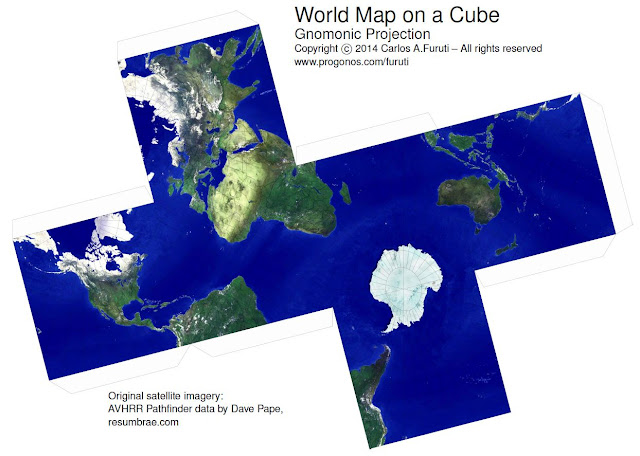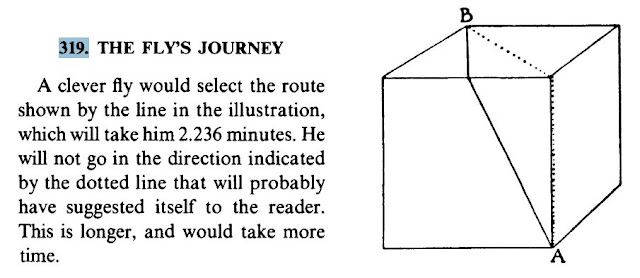The following equation relates the well-known
mathematical constants e, pi, i,
to derive another famous constant:
the golden number φ = 1.61803398874989...
As with Euler's identity, also in this case some
of the most important mathematical constants appear simultaneously in the same
formula.
To demonstrate the relationship, we must start with the Golden
Ratio.
It involves dividing a segment AB into 2 parts
(which we will call AC and CB) in such a way that the continuous
proportion AB : AC = AC : CB holds.
Euclid used this formula when working on pentagons.
We set the smallest segment CB = 1 and AC = x, from which
AB = 1 + x
The required condition is therefore: (1 + x) / x = x / 1
So, we have x2 – x –
1 = 0
The solutions of this quadratic equation have as
solutions:
The Golden Section was the starting point for the
Greek study of regular pentagons, and everything associated with them, such as
the decagon, the dodecahedron and the icosahedron.
As we will see later, if we draw a regular pentagon with
side 1, then the diagonals have the golden number as their
length.
The term Golden Ratio is relatively recent and appears to have been used for the first time by Martin Ohm (brother of the more famous Georg Simon Ohm who gave his name to the law) in his 1835 book.
Before seeing why, let's review some trigonometry
notions.
Trigonometry studies right
triangles starting from their angles. Its main task consists in calculating
the measurements that characterize the elements of the triangle (sides, angles,
etc.) by means of special functions starting from already known measurements.
Trigonometric functions (the most important are sine
and cosine) are also used independently of geometry, for example in
connection with the exponential function.
1) The sine of an angle is the ratio between the
length of the opposite side and the length of the hypotenuse.
2) The cosine of an angle is the ratio between the length of the adjacent side and the length of the hypotenuse.
Euler's formula is a formula in
the field of complex analysis that shows a profound relationship between trigonometric
functions and the complex exponential function. Euler's identity
is a special case of Euler's formula.
Euler's formula, named after the mathematician Leonhard
Euler, was first proven by Roger Cotes in 1714 and then rediscovered
and made famous by Euler in 1748. Neither saw the geometric interpretation of
the formula: the vision of complexes numbers like points in the plane arrived
only about 50 years later, thanks to Wessel, Argand and Gauss.
The most widespread proof is based on the Taylor
series expansion of the exponential function.
Euler's formula also allows the sine and cosine functions
to be interpreted as simple variants of the exponential function:
Euler's formula: eix = cos x + i sin x
Euler's
formula also allows the sine and cosine functions to be
interpreted as simple variants of the exponential function:
sin x = ( eix - e-ix ) / 2i cos x = ( eix + e-ix ) / 2
As is known, angles can be expressed in different ways,
the most used are sexagesimal degrees and radians. Below,
depending on the purpose, both will be considered.
Let's now show some notable angles: 30, 36, 45, 60 and 90
degrees.
In particular, the sine (30°) = ½ (whose square is equal
to ¼); similarly, the sine squares of 45, 60 and 90 degrees are respectively:
2/4, 3/4 and 4/4.
A regular pentagon with side 1 (e.g. DE) has other
particular properties and it can be shown that the diagonals (e.g. AD)
have length φ.
The 2 isosceles triangles ADE and DCE are
similar so AD : DE = DE : CE
Setting AD = x we have:
x : 1 = 1 : (x – 1) 1 =
x2 – x x2 – x – 1 = 0
So,
in analogy to what was seen above: AD = φ
that
is, in a regular
pentagon of side 1, the diagonals are equal to φ
For
the right triangle ABC we can therefore obtain:
cos 36° = AB / AC = φ / 2 = 0.809016994374945…
Combining this result with the cosine function, we obtain the initial statement:
Below
I report other notable formulas:





































